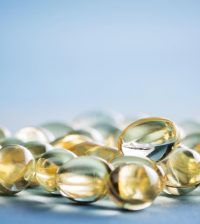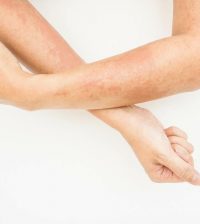- E. Coli Fears Spur Recall of 167,000 Pounds of Ground Beef
- Weight-Loss Drug Zepbound May Lower Heart Failure Deaths
- Nearly 160 Million Americans Harmed by Another’s Drinking, Drug Use
- 1 in 4 Americans Now Struggling to Cover Medical Costs
- Getting Fitter Can Really Help Keep Dementia at Bay
- Skin Patch Could Monitor Your Blood Pressure
- There May Be a Better Way to Treat Hematoma Brain Bleeds
- Chronic Joint Pain Plus Depression Can Take Toll on the Brain
- Living in Space Won’t Permanently Harm Astronauts’ Thinking Skills
- Kids’ Injuries in Sports and at Home: When Is It Right to Seek Medical Attention?
Poison Ivy, Oak and Sumac Rashes Can Be Serious

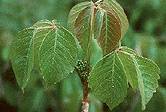
Itchy, blistering rashes from poison ivy, oak and sumac are common and are caused by an oil in the plants called urushiol.
Usually, you can deal with these rashes at home, the American Academy of Dermatology (AAD) says. But you should go to the emergency room immediately if you have any of the following symptoms:
- Trouble breathing or swallowing,
- The rash covers most of your body, you have many rashes or blisters, or the rash develops anywhere on your face or genitals,
- You develop swelling, especially if an eyelid swells shut,
- Much of your skin itches, or nothing eases the itch.
If you don’t have any of these symptoms, you can probably treat the rash at home, according to the AAD.
If you know you’ve touched poison ivy, poison oak or poison sumac, immediately rinse your skin with lukewarm, soapy water. This may remove some of the oil from the plants. Thoroughly wash all the clothes you were wearing when you came into contact with plant. The oil can stick to clothing and cause another rash if contaminated clothing touches your skin.
You also need to use warm, soapy water to wash everything that might have the oil on its surface, such as gardening tools, golf clubs, leashes and even your pet’s fur.
Avoid scratching, which can cause an infection. And, leave blisters alone. Taking short, lukewarm baths with an oatmeal preparation you can buy at a drugstore, or with one cup of baking soda added to the water, can help ease itching. Short, cool showers may also help.
Other ways to relieve itching include putting calamine lotion or hydrocortisone cream on your skin. Applying cool compresses may also help ease itching. Make a cool compress by wetting a clean washcloth with cold water and wringing it out so that it does not drip.
Antihistamine pills can also reduce itching, but use them with caution, the AAD noted. Do not apply antihistamines to the skin. Doing so could worsen the rash and itch, the AAD said.
See a doctor if the rash does not improve within seven to 10 days, or if you think you may have an infection.
More information
The U.S. National Library of Medicine has more about poison ivy, sumac and oak.
Source: HealthDay
Copyright © 2024 HealthDay. All rights reserved.

-120x134.jpg)
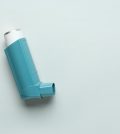

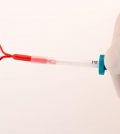
-200x224.jpg)
